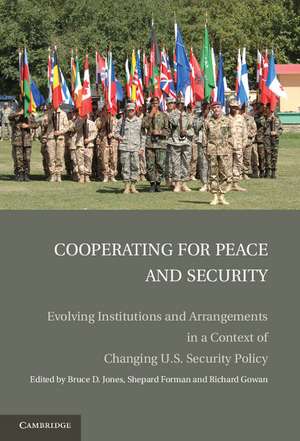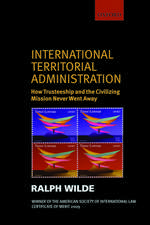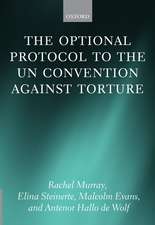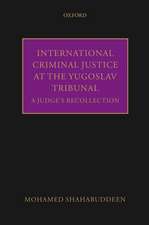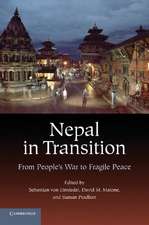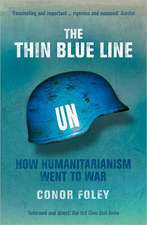Cooperating for Peace and Security: Evolving Institutions and Arrangements in a Context of Changing U.S. Security Policy
Editat de Bruce D. Jones, Shepard Forman, Richard Gowanen Limba Engleză Paperback – 29 mar 2012
| Toate formatele și edițiile | Preț | Express |
|---|---|---|
| Paperback (1) | 321.14 lei 6-8 săpt. | |
| Cambridge University Press – 29 mar 2012 | 321.14 lei 6-8 săpt. | |
| Hardback (1) | 784.48 lei 6-8 săpt. | |
| Cambridge University Press – 29 oct 2009 | 784.48 lei 6-8 săpt. |
Preț: 321.14 lei
Nou
Puncte Express: 482
Preț estimativ în valută:
61.46€ • 66.73$ • 51.62£
61.46€ • 66.73$ • 51.62£
Carte tipărită la comandă
Livrare economică 23 aprilie-07 mai
Preluare comenzi: 021 569.72.76
Specificații
ISBN-13: 9781107661318
ISBN-10: 1107661315
Pagini: 362
Ilustrații: 1 b/w illus. 2 tables
Dimensiuni: 152 x 229 x 19 mm
Greutate: 0.5 kg
Editura: Cambridge University Press
Colecția Cambridge University Press
Locul publicării:New York, United States
ISBN-10: 1107661315
Pagini: 362
Ilustrații: 1 b/w illus. 2 tables
Dimensiuni: 152 x 229 x 19 mm
Greutate: 0.5 kg
Editura: Cambridge University Press
Colecția Cambridge University Press
Locul publicării:New York, United States
Cuprins
Part I. Framework: 1. Introduction: 'two worlds' of international security Bruce Jones and Shepard Forman; 2. 'The mission determines the coalition': the United States and multilateral cooperation after 9/11 Stewart Patrick; 3. UN transformation in an era of soft balancing Stephen John Stedman; Part II. Adapting Cold War Institutions: 4. An evolving UN Security Council David Malone; 5. Too many institutions? European security cooperation after the Cold War Richard Gowan and Sara Batmanglich; 6. Whither NATO? Mats Berdal and David Ucko; 7. The evolution of nuclear non-proliferation institutions Christine Wing; 8. 9/11, the 'war on terror' and the evolution of counter-terrorism institutions Eric Rosand and Sebastian von Einsiedel; 9. Evolution and innovation: biological and chemical weapons Fiona Simpson; Part III. New Tools, New Mechanisms: 10. Normative evolution at the UN: impact on operational activities Ian Johnstone; 11. Constructing sovereignty for security Barnett R. Rubin; 12. New arrangements for peace negotiation Teresa Whitfield; 13. International humanitarian cooperation: aiding war's victims in a shifting strategic environment Abby Stoddard; 14. The evolution of regional and sub-regional collective security mechanisms in post-Cold War Africa Sarjoh Bah; 15. International courts and tribunals Cesare Romano; Part IV. Conclusions: 16. Conclusion: international institutions and the problems of adaptation Richard Gowan and Bruce Jones.
Recenzii
'This volume provides a uniquely detailed and wide-ranging survey of international institutions and security cooperation since the end of the Cold War. It will become a standard point of reference in debates about the US and multilateralism in a changing world.' Kemal Dervis, Vice President and Director of Global Economy and Development, The Brookings Institution and former Executive Head of UNDP
Descriere
This book shows that US interests have shaped institutions, but other states have also driven reforms without US support.
